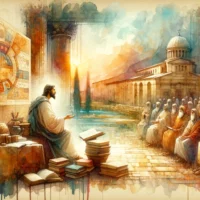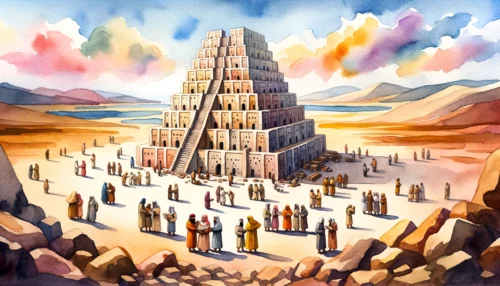The Gnostic Gospels are a fascinating subject, filled with mystery and intrigue. These ancient texts were discovered in the 20th century and have since stirred up curiosity and debate among scholars and believers alike. In this article, we’ll shed light on the history of the Gnostic Gospels, their unique teachings, and how they challenge our understanding of early Christianity. Come along on this journey to unveil the hidden wisdom of these controversial scriptures.
Origins and Discovery of the Gnostic Gospels
The Gnostic Gospels are a collection of texts written between the 2nd and 4th centuries AD, many of which were discovered in a remarkable archaeological find in 1945 near the town of Nag Hammadi, Egypt. The Nag Hammadi library, as it is now called, consisted of 13 leather-bound papyrus codices containing over 50 texts, most of which were written in the Coptic language. The discovery of these texts revealed a trove of early Christian and Gnostic writings that had been hidden away for centuries.
Gnosticism is a diverse and complex religious and philosophical movement that emerged in the early centuries of Christianity. It incorporates elements of early Christianity, Judaism, and Greek philosophy. Gnostic teachings emphasize the importance of personal spiritual knowledge, or gnosis, as the key to salvation. Gnostics believed that this divine knowledge was hidden from most people and only accessible to a select few who were enlightened. Gnosticism was deemed heretical by the early Church, and many Gnostic texts were subsequently banned and destroyed (Ephesians 5:11).
The Gnostic Gospels provide an alternative perspective on the life and teachings of Jesus Christ. Some of the most famous texts from the Nag Hammadi library include the Gospel of Thomas, the Gospel of Philip, and the Gospel of Mary. These writings often depict a more mystical and esoteric side of Jesus’ teachings, emphasizing his role as a revealer of hidden wisdom. It’s important to note that these Gospels are not part of the canonical Bible, which consists of 66 books accepted by the majority of Christian denominations (2 Timothy 3:16-17).
Scholars believe that the Gnostic Gospels were hidden away to protect them from destruction during the widespread persecution of Gnostic and other non-orthodox Christian sects. Despite being excluded from the official canon, the Gnostic Gospels provide valuable insight into the diverse range of beliefs and practices that existed within early Christianity.
The origins and discovery of the Gnostic Gospels reveal a fascinating chapter in the history of early Christianity. The texts, while not part of the biblical canon, offer a glimpse into the rich diversity of beliefs and ideas that were present during the early centuries of the faith. By understanding the context and teachings of these gospels, we can better appreciate the development of Christianity and the ongoing quest for spiritual knowledge and truth.
Key Teachings and Differences from Canonical Texts
The Gnostic Gospels contain a variety of teachings that diverge from those found in the canonical Bible. As mentioned earlier, Gnosticism places a strong emphasis on personal spiritual knowledge, or gnosis, as the means to salvation. This is in contrast to the mainstream Christian belief in salvation through faith in Jesus Christ and His atoning sacrifice (Ephesians 2:8-9).
One major difference between the Gnostic Gospels and the canonical texts is the portrayal of Jesus. In the Gnostic Gospels, Jesus is often depicted as a spiritual guide who imparts secret knowledge to His disciples. For example, the Gospel of Thomas consists of a collection of sayings attributed to Jesus, many of which emphasize the importance of self-discovery and inner enlightenment (John 14:6). In contrast, the canonical Gospels focus on Jesus’ life, ministry, crucifixion, and resurrection as the fulfillment of God’s plan for humanity’s redemption (Matthew 28:18-20).
Another key distinction between the Gnostic Gospels and the canonical texts is the Gnostic view of the material world. Gnostics generally believed that the material world was corrupt and evil, created by a lesser deity or “demiurge” rather than the true God (1 John 2:15-17). Consequently, they saw the human body as a prison for the divine spark within each person, which needed to be liberated through spiritual knowledge (2 Corinthians 5:1-5). This belief contrasts sharply with the biblical teaching that God created the world and declared it good, and that our bodies are temples of the Holy Spirit (Genesis 1:31; 1 Corinthians 6:19-20).
The Gnostic Gospels also differ from the canonical texts in their portrayal of prominent biblical figures. For instance, the Gospel of Mary presents Mary Magdalene as a favored disciple of Jesus, who receives special revelations and is entrusted with sharing this knowledge with the other disciples (Luke 8:1-3). This portrayal contrasts with her more limited role in the canonical Gospels. Additionally, the Gnostic texts sometimes present a more critical view of the apostle Peter, questioning his understanding of Jesus’ teachings (Matthew 16:15-19).
By examining the key teachings and differences between the Gnostic Gospels and the canonical texts, we can see the diversity of beliefs that existed within early Christianity. While these texts offer alternative perspectives on Jesus’ life and teachings, it is important to remember that they are not part of the accepted biblical canon and therefore do not carry the same authority for most Christians. Nevertheless, studying these texts can provide valuable insights into the historical and cultural context of early Christianity and contribute to a deeper understanding of the faith.
The Impact of the Gnostic Gospels on Christianity Today
The discovery of the Gnostic Gospels in the 20th century has had a significant impact on the study of early Christianity and has sparked renewed interest in the diverse range of beliefs and practices that existed within the early Christian community. While the Gnostic Gospels are not part of the biblical canon and are not considered authoritative for most Christian denominations, they have contributed to our understanding of the historical and theological development of Christianity (1 Peter 3:15).
One major impact of the Gnostic Gospels is the way they have challenged traditional views of early Christian history. The texts reveal that there was a rich variety of beliefs and ideas during the early centuries of the faith, and that the process of defining orthodoxy was more complex and contentious than previously thought (1 Corinthians 1:10). This has led to a reevaluation of the origins of Christian doctrine and a greater appreciation for the diversity of perspectives that were present in the early Church.
The Gnostic Gospels have also stimulated discussion and debate on a range of theological topics. For example, the Gospel of Thomas has attracted interest due to its collection of sayings attributed to Jesus, some of which resemble passages in the canonical Gospels while others offer novel and intriguing insights (John 21:25). The Gospel of Mary has similarly generated interest due to its portrayal of Mary Magdalene as a prominent disciple and teacher, prompting discussions about the role of women in early Christianity (Galatians 3:28).
Finally, the Gnostic Gospels have inspired a renewed interest in spirituality and mysticism within Christianity. While not accepted as canonical, these texts offer insights into the mystical dimensions of Jesus’ teachings and the quest for spiritual knowledge. This has led some Christians to explore the wisdom contained within these texts and integrate aspects of Gnostic spirituality into their own faith practices, always taking care to discern what is in line with the core teachings of Christianity (1 Thessalonians 5:21).
The impact of the Gnostic Gospels on Christianity today is multifaceted, revealing the complexity and diversity of early Christian beliefs while also stimulating discussion, debate, and spiritual exploration. While not considered authoritative by most Christians, the Gnostic Gospels provide valuable insights into the historical development of the faith and can serve as a catalyst for a deeper understanding of Christian spirituality. By engaging with these texts and the questions they raise, we can gain a richer appreciation for the breadth and depth of the Christian tradition.
Navigating the Gnostic Gospels with Discernment
In conclusion, the Gnostic Gospels present a fascinating window into the diverse beliefs and ideas that were present in early Christianity. As Christians, it is important to approach these texts with caution and discernment, recognizing that they are not part of the accepted biblical canon and do not carry the same authority as the canonical scriptures. Nevertheless, the Gnostic Gospels can provide valuable insights into the historical and cultural context of early Christianity and contribute to a deeper understanding of the faith.
To further explore the topic, consider these personal questions:
- How can I engage with the Gnostic Gospels in a way that deepens my understanding of Christianity while maintaining my commitment to the authority of the canonical scriptures?
- What aspects of the Gnostic Gospels challenge or enrich my understanding of Jesus’ life and teachings?
- How can I discern the wisdom contained within the Gnostic Gospels and integrate it into my own faith journey in a way that aligns with the core teachings of Christianity?
As we navigate the complex and diverse world of the Gnostic Gospels, let us be inspired by the Apostle Paul’s words to “test everything; hold fast what is good” (1 Thessalonians 5:21). In doing so, we can expand our understanding of the Christian tradition while remaining grounded in the truth and authority of the canonical scriptures.














